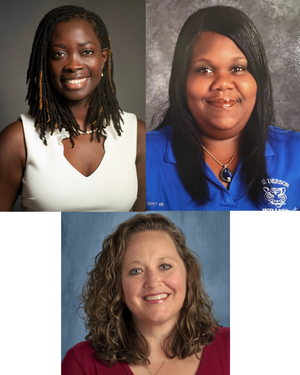On the other side of COVID-19, we continue to experience the ramifications of the pandemic’s effects on students academically and emotionally and on teachers’ skills to address these issues. At Henderson Middle School in Jackson, GA, we quickly realized that it would take collective teacher efficacy to help us face these challenges—and that quality professional development was needed.

First, we had to grow our understanding of the social emotional learning (SEL) skills that were underdeveloped during this time. While there was some federal professional development funding available to us via the Title II, Part A, program to take care of predictable learning needs in our district, there was not enough funding to pay for increased professional development. The CARES Act funds and other state grants that we were awarded helped our school with professional development needs, but that was one-time-only emergency support. Now we are left to wonder what will happen when this extra funding is gone? How will we continue to provide equitable opportunities for our students without adequate annual increases from Congress to ESSA programs like Title II that support the professional growth of our educators?
The Catalyst for Collective Efficacy
Collective efficacy is a shared belief that by working together, members of a team can positively impact student outcomes. Post COVID-19, we recognized that, as a staff, we did not have the ability to positively impact the deficits in SEL and student writing because we all did not have the skills to do so. To that end, we realized that all staff members needed to be trained in SEL and writing if we were going to have the social and academic impact on our students that we were seeking.
State Literacy Grant Funding
Data collected during the pandemic revealed that our students were not reaching mastery in writing. The Title II funding our district received was already designated for other initiatives. Luckily, our district had been approved for the Georgia Department of Education’s Literacy for Learning, Living, and Leading in Georgia Grant (L4GA) just before the pandemic occurred. Through this program, we were able to fund professional development in writing.
We focused on teacher mastery of the writing process itself. In addition, the L4GA grant allowed us to provide training in writing for all non-ELA teachers. The goal was to bring uniformity to the teaching of writing in our building. Teachers were trained, monitored, and even provided with co-teaching opportunities with the writing coach. They focused on data collection and how to analyze the data to differentiate the writing instruction for the varying levels of needs within the classroom.
In the end, the data showed that our students responded well to this model. We saw an increase in writing performance across all three grade levels: a 12% increase with our 6th graders; a 4 % increase with our 7th graders; and a 15 % increase with our 8th graders. Both teachers and students have gained confidence and are moving towards proficiency in writing. The results show that our growth is a direct result of our intentional professional development initiative in writing. However, we recognize that there is still room to grow, and the L4GA funding is about to expire. We are now left to figure out how we will cover the cost to continue making growth in this area. Continued training and the funding to administer it are a must.
SEL through CARES Act Funding
The underdevelopment of social emotional skills is an unfortunate effect of the pandemic. Students were returning to school with deficits in all components of SEL: self-management, social awareness, self-awareness, relationship skills, and responsible decision-making. After the 2020–21 school year, we realized that a focus on academics alone would not suffice. Fortunately, funding through the CARES Act paid for professional development in SEL.
As a result, we saw a significant improvement in student self-management. There was a decrease from over 1,500 office referrals and 104 fights before the pandemic (2018–19 school year) to 600 office referrals and 13 fights after the pandemic (2021–22 school year).
In addition, we saw improvements in social awareness and relationship skills among staff and students based on data from the 2021–22 Georgia Student Health Survey as compared to the 2018–19 survey. For example, there was an 8% improvement on the survey item: “Students at my school treat each other with respect.”
Unfortunately, we have seen a negative change in responsible decision-making. The survey shows an increase of 4% in the number of students who have considered harming themselves due to the demands of academic performance. This figure indicates that our work in SEL remains unfinished. Teachers will need additional professional development in this area as we continue to address the SEL needs of our students.
Conclusion
Although our faculty and staff received SEL and writing professional development opportunities with the help of state and federal grant funding—which enabled us to implement collective efficacy initiatives—the grants are a temporary fix to a permanent problem. An increase and a commitment to increasing funding annually for the ESSA Title II, Part A, program will ensure that we can maintain the growth that we know our students and teachers are capable of. As new teachers come into our building and as we respond to the needs of our students, we must prioritize and increase the funding of professional development through Title II to support and prepare our teachers.

